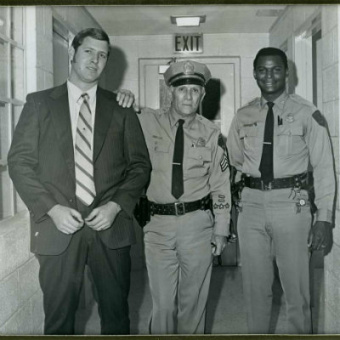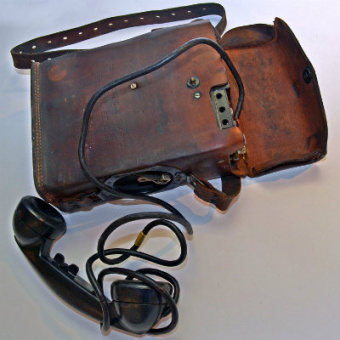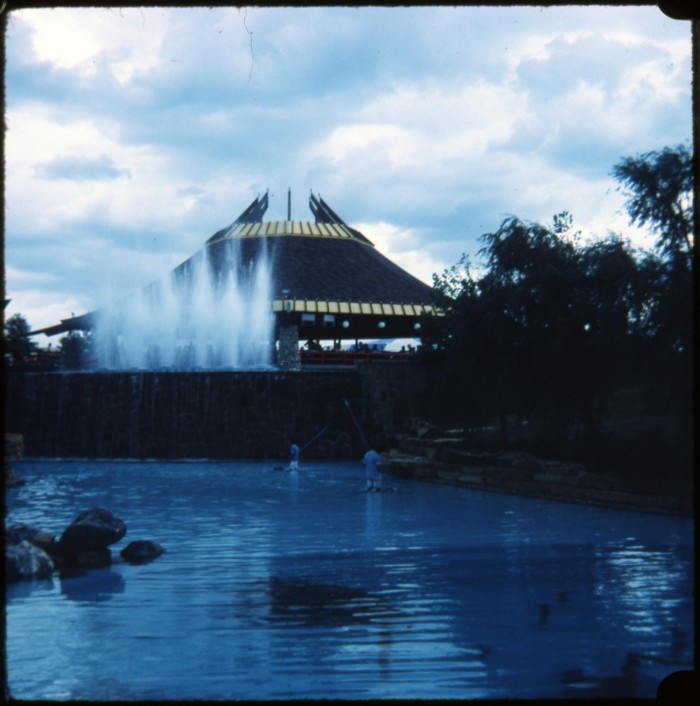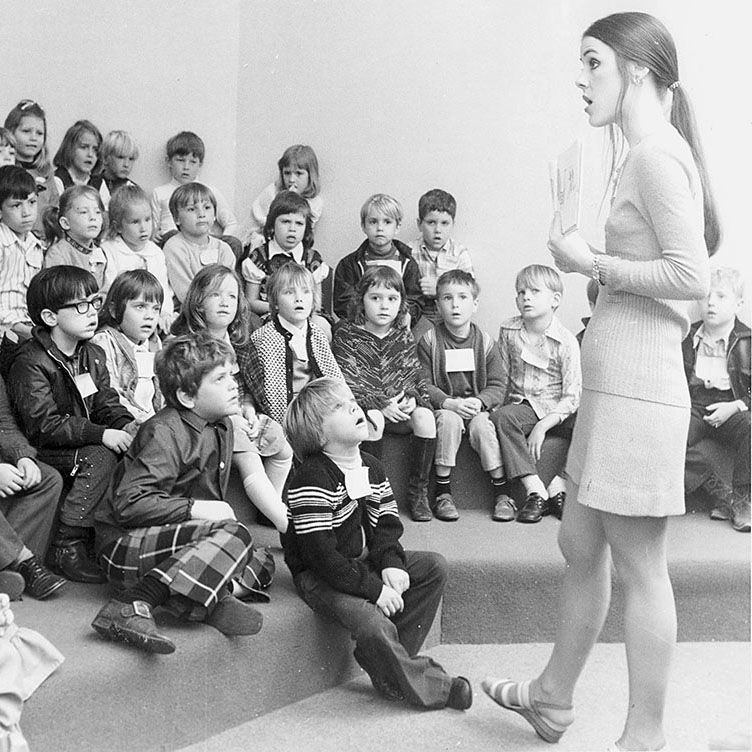
Arlington Black History Community Archive



This digital collection, created and hosted by the Arlington Public Library, will provide free searchable access 24/7 to many of the historical photos, recordings, and documents of Arlington's past.
The Library is excited to collaborate and launch these projects. We welcome and encourage the community to participate by sharing their family history. Our goal is to help preserve Arlington’s rich and diverse history and to uplift everyone's story.
Harold K. Elliott Police Museum Photos

Photos span the years 1914 to the present.
Made possible by a grant from The Arlington Tomorrow Foundation.
History of the Arlington Police Department
by Harold Elliott
Early Years: 1884 – 1934
The City of Arlington, TX, was chartered April 19, 1884. In its early years, many interesting, sad, and often humorous events took place. From 1894 until 1934, there was a succession of Marshals and Police Chiefs.
The first record of a law enforcement agency in Arlington was in 1894 with the appointment of W.M. Douglass as City Marshal. In 1900, according to Ordinances #25 and #28, the Marshal also served as the Tax Collector and City Engineer. On Feb. 13, 1908, the Fire Chief and the Assistant Fire Chief were appointed to serve as policemen as well as firemen. In 1908 the City Council bought two bloodhounds for the City Marshal. Someone shot and killed one of them on Sept. 10, 1910. The first speed limit was established at 10 mph on Nov. 23, 1911. The next year, on Feb. 12, 1912, the City purchased its first motorcycle, an Indian Twin Cycle (7 horsepower) for #290.
On Nov. 14, 1912, the office of City Marshal was abolished. However, it was reinstated Dec. 12 of the same year. On July 3, 1914, Mayor P.F. McKee appointed Mrs. Carrie C. Rogers to be City Marshal. Her salary was $5 a month. She was relieved of her duties Sept. 10, 1914. The motorcycle that was purchased in 1912 was traded for a horse and buggy on Dec. 8, 1915. The title of Marshal was changed to Police Chief with the appointment of Pearl Rudd on Aug. 2, 1915.
In 1922 the City Council bought a two-cell steel jail for $302.40 to replace the wooden jail. On April 6, 1922, Harvey Olman was hired as Assistant Chief of Police, and W.M. Douglass was hired as City Detective May 9, 1922. The Police Commissioner was placed in charge of all police and fire personnel on May 3, 1923.
The first signal light was installed in 1933 at Division St. (also known as the Bankhead Highway) and Center St. The Police Department abandoned the policy of buying police uniforms on May 2, 1933.
Although no one was aware of it at the time, the history of the Arlington Police Department was about to begin dramatic changes with the hiring of A.B. “Ott” Cribbs as a police officer on May 17, 1926. He was appointment Police Chief on April 17, 1934, a position he held for the next 37 years. Citizens raised $450 to send Chief Cribbs to the FBI Academy on Aug. 8, 1940. He retired in 1971. Only five Police Chiefs have served the Arlington Police Department since 1934.
Marshals and Police Chiefs of Arlington
| Marshal | Year Instated |
|---|---|
| W.M. Douglass | 1894 |
| E.M. James | 1896 |
| W.M. Douglass | Nov. 8, 1900 |
| J.D. Cone | Dec. 10, 1908 |
| J.B. Watson | April 13, 1911 |
| James “Red” Wright | Dec. 12, 1912 |
| C.C. McElreath | April 10, 1913 |
| Mrs. Carrie Rogers | July 3, 1914 |
| W.M. Lytile | Sept. 10, 1914 |
| W.T. Hutchenson | April 15, 1915 |
| Police Chief | Year Instated |
|---|---|
| Pearl Rudd | Aug. 2, 1915 |
| C.H. “Punch” Wright (Refused to take office) | Feb. 21, 1916 |
| Walter Norvil | March 6, 1916 |
| Pearl Rudd | 1917 |
| Jim Coke | April 14, 1919 |
| G.A. Coke | April 7, 1924 |
| W.M. Douglass | May 14, 1925 |
| G.A. Coke | June 21, 1926 |
| Otto Grimmett | Dec. 20, 1926 |
| W.M. Douglass | April 11, 1927 |
| Ed Collins | April 16, 1929 |
| Linton Lovell | May 5, 1931 |
| Ed Collins | April 24, 1933 |
| A.B. “Ott” Cribbs | April 17, 1934 |
| Herman Perry | Feb. 1, 1971 |
| Roy Ables | Oct. 1, 1983 |
| David Kunkle | Jan. 14, 1985 |
| Theron Bowman | March 9, 1999 |
| Will Johnson | March 18, 2013 |
1935 – 1972
 In 1941 the City Council passed an ordinance permitting police officers to make arrests without warrants.
In 1941 the City Council passed an ordinance permitting police officers to make arrests without warrants.
Arlington police cars were equipped with radios after the State Highway Patrol Radio Station was installed on East Abram St. on Feb. 19, 1945.
In the early 1950s, two Texas State highway Patrol Officers, Claude Reeves and Rufus Taylor, began an Auxiliary Police Unit. The auxiliary officers were not allowed to wear police uniforms or carry guns. Their only identification was a four-inch-wide blue armband with the word POLICE stitched in white. Later when their services were needed, Chief Cribbs issued them Arlington, Texas Special Officer badges. Chief “Ott” Cribbs became concerned that one of them would get hurt because they were not allowed to carry guns, so in 1954 he changed it from an auxiliary unit to a reserve police unit. Although they were authorized to carry weapons they received little or no formal training.
The Arlington Police Department began assigning ID numbers to its members in 1967. The numbers were assigned beginning with the Chief of Police, Assistant Chief, Lieutenants, Sergeants, Service Division and Detective Division (#001-#026) and then alphabetically (Henry Alder #027 through Bill Willard #064).
After the initial assignment of ID numbers they were assigned to employees according to their seniority date along with their date of hire, beginning with #065. Officer Ben Bounds, #066, hired initially in 1959, and civilian Betty Horton, #071, hired in 1957, resigned prior to 1966 and rehired in 1967, after the assignment of the original numbers.
In September 1968 Lt. Roy Ables was certified as a Police Firearms Instructor, and shortly thereafter began conducting firearms training classes for the reserve officers. In 1970 Lt. Ables and Sgt. Don “Red” Martin began the first school for Reserve Officers. In early 1972 Lt. Ables drafted a proposed curriculum for a Reserve Police Academy to meet the requirements of legislation pertaining to reserve officer training. The Commission on Law Enforcement Standards and Education approved it. Lt. Ables served as coordinator for the Reserve Academy, and on May 18, 1972, the Arlington Police Department awarded him the Distinguished Service Award for that achievement.
Late 1970s – 1980s
 Starting in 1972, Special Enforcement Officer Gary Shipp led in the development and operation of the Departments Tactical (SWAT) teams and later, in the mid 1980s, as a lieutenant, the development and operation of the Special operation Units. From Los Angeles SWAT to Arlington’s Tactical/Special Operations units, they were developed after race riots, kidnappings, homegrown terrorists, and sniper shootings of the 1960s and 1970s displayed inadequate response by police.
Starting in 1972, Special Enforcement Officer Gary Shipp led in the development and operation of the Departments Tactical (SWAT) teams and later, in the mid 1980s, as a lieutenant, the development and operation of the Special operation Units. From Los Angeles SWAT to Arlington’s Tactical/Special Operations units, they were developed after race riots, kidnappings, homegrown terrorists, and sniper shootings of the 1960s and 1970s displayed inadequate response by police.
The Arlington Basic Tactical School and Teams were formed using internal expertise, as the department had many ex-military with specialized skills and combat experience. Instructors and team members did so providing their own equipment with no budget. Only with the development of the Special Operations Division in the mid 1980s were there budgeted funds. Policy and procedures were written along the way. External expertise, from the U.S. Army and private enterprise assisted with the counter-sniper, helicopter deployment, automatic weapons use/qualifications, as well as explosive entry/breaching of doors and walls.
Both the school and the Tactical/Special Operations Teams developed a reputation of excellence with local, state and federal agencies.
Chief Herman Perry instituted the Internal Affairs Division in 1980. On Aug. 18, 1980, Deputy Chief Marion Rettig called Sergeant Danny Sustaire and offered him the position of Internal Affairs Coordinator. After careful consideration he told Chief Rettig he would accept the position “on the condition that we run it as a straight up operation and that we will be completely open on both sides of any issue.” Rettig agreed that he would “have it no other way.” Sustaire remained in that assignment for the next four years.
The City Council approved a fulltime Police Chaplain’s position in 1981. After having served eight years as a volunteer chaplain, Harold Elliott became the fulltime chaplain on March 29, 1982.
The Police Museum was founded by Chaplain Harold Elliott in 1982 but was not formally established until 1989 at which time it was housed on the first floor of the Main Police Station. With the retirement of Chaplain Elliott on June 30, 2004, the City and Police Department officially named the museum the Harold K. Elliott Police Museum. It was moved to a more spacious room at the Police Training Center in March 2007. The official reopening was Feb. 25, 2008.
In 1986, the department changed from a tan uniform to a dark blue uniform. Detective Ann Q. Thompson contributed artwork for the new shoulder patch.
Under the leadership of Chief David Kunkle, the Arlington Police Department received CALEA accreditation in 1989.
Sgt. James Laman organized the Honor Guard in 1986. The Honor Guard members received their initial training from the Old Guard at Fort Meyer, Va.
1990s – Today
The department operates its own Police Academy out of the Training Center. The first class graduated June 8, 1990.
In May 1994 Officer Danny Whittington led the City and Police Department in naming streets around the various stations in honor of the officers who have died in the line of duty.
In 1999 the department secured a forty foot customized Mobile Command vehicle, which is used as an on-scene command center. Members of the department were encouraged to present color and design recommendations for the exterior finish on the mobile unit. Officer Jill Hummel’s design was selected.
Lt. Jim Lowery led the department’s purchase of a Ballistic Equipped Armored Response Vehicle, the B.E.A.R. in 2007. It is designed to assist the tactical team in potentially lethal field operations.
On Feb. 14, 2001, Martha Willbanks, Arlington’s first female police officer, died from natural causes after 28 years of service. She was a patrol lieutenant at the time of her death.
Police Stations
The first recorded history of an Arlington Police Station was that it was “housed in a small white building located on Pecan St. between Abram St. and Main St.” In 1923, it was located on “the east side of South Center Street in the second building off Abram St.” In 1928, the Police Department moved into new quarters at the City Hall located where the present City Hall now stands. In 1954 the Police Department moved to 401 W. Main St. The building also housed the jail and a courtroom. Ground was broken for a new station at 717 W. Main in 1964, where the department remained until 1989 when it moved into a new, three-story, Main Station, at 620 W. Division St. It cost $8.9 million to construct the 88,000 square foot building.
As the City of Arlington grew, substations became a necessity. The facility at 4000 Little Rd. opened in 1971 as a Police and Fire Station. A portion of the building was used by the Police Department for a training center, community services, polygraph examinations, and traffic/motorcycle offices. On Dec. 14, 1973, the section used by the police was dedicated as its first police substation with desk officers on duty 24 hours. Its three jail cells were rarely used. However, serial killer Henry Lee Lucas was held there in the early 1980s while Texas Rangers and Arlington Police detectives investigated murders he was alleged to have committed in Arlington.
In 1980 the training center moved from the Little Road Station to a new facility at 6000 W. Pioneer Pkwy.
In October 1996 the East Station opened at 2001 New York Ave.
In 2003 ground was broken for a West Station located at 2060 W. Green Oaks Blvd. The building was dedicated Dec. 19, 2003.
Grand opening for the South Station at 1030 SW Green Oaks Blvd. was Oct. 25, 2008.
These Arlington Police Service Centers serve the City
- Main Station at 620 W. Division St. — serves North Arlington
- South Station 1030 SW Green Oaks — serves South Arlington
- East Station at 2001 New York Ave. — serves East Arlington
- West Station at 2060 W. Green Oaks Blvd. — serves West Arlington
Death in the Line of Duty
Arlington has lost 8 police officers in the line of duty. James Evans Johnson was shot to death on Nov. 30, 1930. Gary Harl was shot to death July 16, 1975. Terry Lewis and Jerry Crocker died Oct. 9, 1992, from injuries sustained after a drunk driver struck their patrol car. Craig Hanking died on Aug. 3, 1994, when his patrol car collided with a mail truck. Joey Cushman died June 7, 2001, when he was accidentally shot by a fellow officer in a training exercise. Craig Gordon Story died on Jan. 13, 2010, when his department motorcycle collided with a school bus. Jillian Michelle Smith was shot and killed on Dec. 28, 2010, after responding to domestic violence call at apartment complex.
Commitment to the Future
In 1950, the Arlington Police Department had nine paid officers on the roster. In the early 1950s an annual Arlington Police budget of $50,880 compensated 15 officers, a judge and four part-time employees. In contrast, the FY 2007 annual budget was $67.8 million to compensate 596 sworn officers and 188 professional employees.
The department honors the past, treasures the present and looks toward the future with positive anticipation. The past is on display in the Police Museum. The present is lived daily. Preparation for the future is evident in what is being done today.
Updated August 2015Arlington During WWII

Complete list of World War II photos from Fielder House.
Through our historical digital collections we represent a snapshot of Arlington history.
In the 1940s Arlington was a small town where everyone knew their neighbor. When Japan bombed Pearl Harbor on December 7, 1941, and the United States declared war, the entire nation pitched in to help in the war effort. Locally, war bond rallies and fund drives for the USO (United Service Organization) were held. More than 5,000 cadets trained in the ROTC program at the North Texas Agricultural College (present day UTA). Many men from NTAC and Arlington served in every branch of the military.
World War II Servicemen from Arlington
Below are some of the names of the fallen soldiers from Arlington.
Arlington History

Photos from the Arlington Historical Society's Fielder House Museum on The Portal to Texas History.

